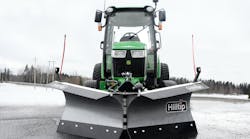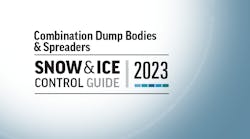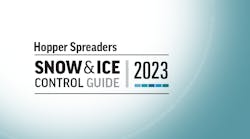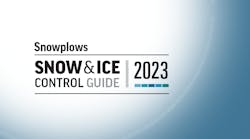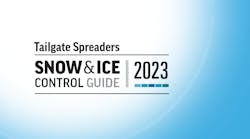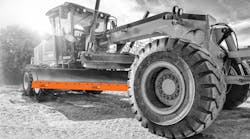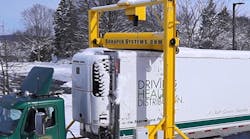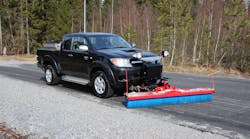Last winter, as Godwin Manufacturing vice president Pat Godwin Jr visited clients in the snow belt, he encountered a common theme: This salt is hammering away at our trucks.
Owner Pat Godwin Sr decided to do something about it. Forget about the recession. Godwin had the financial means to create a solution to the problem, so he decided to invest in a coating process — using a zinc powder primer from PPG called Envirocron — that would more than triple the life of the truck bodies, even if it ended up costing him $6 to $8 million.
“In times like this, people think I'm crazy,” he says. “But I've always said that if you will spend your own money, you won't go broke quite as quick. You don't have to pay interest on your own money.”
He says Godwin Manufacturing could experience a 15-20% boost in its total business as a result of adding this process.
“The life of powder paint is 1000 accelerated salt-spray hours, and I have extended it to 4000,” he says. “That's a heckuva jump. A steel body hopefully will last as long as an aluminum body out there in the salt environment, and save $6000 to $8000 per truck. When we mention it to those in state and local government, they love it. They are writing the specifications for it. They said that everybody has a problem with paint in the salt environment. This is not going to eliminate that, but make it three times better.”
Godwin started researching the process in January and is wrapping up the construction. His staff has done virtually everything: electrical, plumbing, erection of the Wheelabrator blast equipment, building the oven and powder-paint booth. Starting November 15, Godwin will use the process on bodies and component parts.
“I'm always trying to make things better,” he says. “I had the financial means, and the time is perfect.”
Godwin says corrosion comes in a lot of different forms: Moist air is more corrosive than dry air. Hot air is more corrosive than cold air. Hot water is more corrosive than cold water. Polluted air is more corrosive than clean air. Acids are more corrosive than bases (alkalis). Salt water is more corrosive than fresh water.
Powder coatings, sometimes called “dry paint,” consist of resin, cross linker, pigments, extenders, flow aids, other formula specific additives and degassing materials, which are blended, melted, and formed into a homogeneous composite.
One of the final, but critical, steps in powder manufacturing is grinding, which determines the final particle size of the powder product. Most decorative powders have an average particle size in the range of 25-40 microns (a micron is one millionth of a meter, or 1/25,000th of an inch).
Powder coatings are divided into two broad categories, thermoplastic and thermoset. Godwin uses thermoset powder coatings. Thermoset powder coatings products will chemically react or cross link during baking or curing to form a polymer network. Films of cured thermoset powder coatings will not remelt when heat is re-applied.
The Envirocron XZR zinc coating offers excellent corrosion and chemical resistance, and the volatile organic compounds (VOCs) — organic chemical compounds that have high enough vapor pressures under normal conditions to significantly vaporize and enter the atmosphere — are essentially zero.
In Godwin's zinc coating process, bodies are loaded and grounded to the powder line, then go through a power wash and degrease to remove oils, then to a dry-down area prior to entering the Wheelabrator. The bodies enter the shot blast to remove mil scale, into a blowoff with clean, compressed air, then zinc powder is applied at 2 mils.
The bodies move into the oven at 300° F, are inspected for defects, return to the booth for a powder topcoat, then go back into the oven at 400° F. They are inspected twice, then completed bodies are sent to assembly.
Godwin says his company has the ability to add a liquefied rubber undercoat on top of the powder/zinc paint, which adds to the durability and life of the paint. Tectyl 2102, a solvent-reduced, rubberized coating formulated to dry quickly, retain flexibility, and provide a textured appearance, is then applied. The film is black and extremely flexible. It can be topcoated, if required, with automotive-type finishes.
